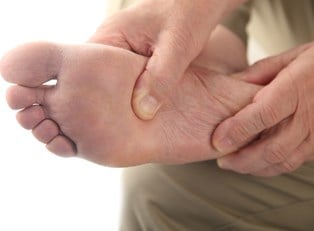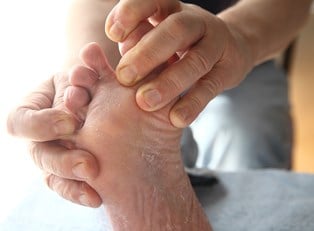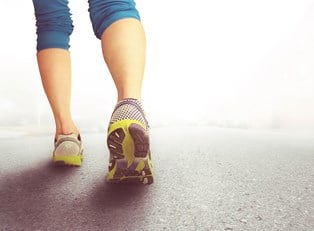Athlete’s foot is a fungal infection that affects the skin on the soles of your feet and between your toes. Fortunately, most cases of athlete’s foot are easily treatable, especially if they are diagnosed early.
Athlete's Foot Medications
- Antifungal creams
Usually, it is easy to treat athlete’s foot on your own if you are able to recognize the infection. There are several options for over-the-counter antifungal topical medications that are generally the best first choice for treating your symptoms. These include: Lotrimin (clotrimazole), Micatin (miconazole), Lamisil (terbinafine), and Tinactin (tolnaftate).
If the nonprescription medications do not help because the infection is too severe, there are other options that can be prescribed by your doctor. Some common prescription strength antifungals include Mentax (butenafine), Lotrimin (clotrimazole), and Naftin (naftifine).
Some topical antifungal medications work faster than others, with some only taking between one and two weeks. Others can take four to eight weeks to show improvement. The faster-acting medications will usually be more costly. - Oral antifungal pills:
For especially severe cases, a topical antifungal might not be strong enough to treat the infection, in which case an oral antifungal will be prescribed. Examples of oral antifungals are Diflucan (fluconazole), Sporanox (itraconazole), and Lamisil (terbinafine). Oral antifungal medications will usually be taken for two to eight weeks before showing results.
Athlete's Foot Remedies
Besides medications, there are other things you can do at home to treat the infection and relieve some of the symptoms that result from athlete’s foot. Some common treatments include:
- Tea tree oil
This is a natural antifungal and antibacterial agent that is derived from an Australian tree called the melaleuca alternifolia. When applied to the feet, tea tree oil can effectively kill some of the fungi and reduce some symptoms, but it will likely not be strong enough to completely get rid of the infection. - Garlic
There is an antifungal compound found in garlic called ajoene. Depending on the severity of the infection, this can be effective at treating athlete’s foot as well. - Burow’s solution
This is a non-prescription solution made with water and aluminum acetate that can be found in most drugstores. It can be very effective at treating any painful blisters or itching that may be a result of athlete’s foot. It works by soothing and drying out the blisters. After the blisters are gone, antifungal creams or oral antifungal medications may be more effective. - Air
It can be helpful for your treatment progression if you try to let your feet air out as much as possible. Since fungus loves moisture and heat, wearing open-toed shoes while you are recovering can help keep your feet dry and therefore prevent the infection from getting any worse. If you have to wear tennis shoes while you are treating the infection, be sure to change your socks frequently if your feet start to sweat. It can also be helpful to apply powder (especially antifungal variations) to your feet before putting on socks and shoes to keep your feet dry and sweat-free.



